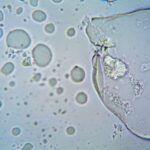Tick Removal and Treatment

The internet is littered with all kinds of folklorish advice for how to remove a tick. Some say you should apply heat to it so it suffocates and dies, while others suggest coating it with petroleum jelly so it slips off your skin.
But the truth is that none of these strategies are a safe way to go about removing ticks after a tick bite. So what’s the best way to remove ticks? Read on to find out.
Why is Tick Removal Necessary?
Ticks are bloodsucking parasites that feed on their hosts by attaching themselves to the host’s skin. When a tick bites you, it can transmit various kinds of protozoans, bacteria, and viruses that can cause debilitating diseases and health conditions like:
- Lyme disease
- Colorado tick fever
- Tularemia
- Anaplasmosis
- Relapsing fever
- Babesiosis
- Tick paralysis
- Ehrlichiosis
- Rocky Mountain spotted fever
- Southern Tick-Associated Rash Illness (STARI).
There are many different kinds of ticks and not all of them are carriers of diseases. But since you can’t know which tick will infect you by simply looking at it, it’s better to remove it as quickly as possible to reduce the chances of an infection.
Removing ticks will also prevent them from breeding and infesting your home.
It takes about 36 to 48 hours of attachment for a tick to pass on any diseases to you, so the longer it stays on your skin, the greater the likelihood of getting infected.
Get Ready for Tick Removal
Although tick removal is not a complicated process, you will need a few supplies before you get started. Grab:
- A pair of clean pointy (fine-tipped) tweezers
- Rubbing alcohol (soap and water is fine too)
- A small jar or container
- Antibiotic cream
You might also want to enlist the help of a friend or family member if the tick bite is in an area of your skin that you can’t easily reach.
How To Remove A Tick The Right Way
Once you have your supplies ready, it’s time to get down to work. Steady your hands, take a deep breath, and follow these steps for safe tick removal:
- Using the tweezers, grasp your skin’s surface near the tick’s head as close as possible.
- Pull the tick straight upward, applying steady pressure until it comes loose. Avoid twisting and turning because it won’t make removal faster or easier, but it may cause the tick to break. You can press down on the sides of the skin to ease any pinching sensation that you might feel.
- If the tick breaks, don’t fret. Just go back in and remove the rest of the tick’s mouth parts. And if you can’t get everything out, leave it alone. The tick’s mouth parts are not infectious without the rest of the tick to back them up. Your skin will reject the leftover bits as it heals.
- Place the tick and any broken parts in your jar or container. Never squash a tick because it may release pathogens.
- Once the tick is secured, clean the bite area, the tweezers, and your hands thoroughly with rubbing alcohol or soap and water. Apply an antibiotic cream to the bite area to minimize the risk of local infection.
Some Complications Associated with Tick Removal
As long as you know how to remove ticks safely and you do so on time (using the above steps) before the tick can transmit diseases to you, there shouldn’t be any complications for you to worry about.
The risk of getting infected or developing other problems arises when you fail to remove the tick correctly. In which case, you should see your doctor right away.
When To Contact Your Doctor
You should reach out or pay a visit to your health care provider if:
- You aren’t able to completely get rid of the tick. If you can’t remove the tick or you suspect it has been attached to your skin for more than 24 hours, consult your doctor. The longer a tick stays glued to your skin, the greater the risk of infection and irritation.
- The rash gets worse. It’s normal to see a small rash on the spot where the tick bit you, but it becomes a cause for alarm if the rash gets bigger or develops anywhere else. It could be a symptom of Lyme disease, so speak to your doctor immediately.
- You encounter flu-like signs and symptoms. Getting a fever, headache, fatigue, chills, and muscle aches after a tick bite could point to a developing disease or condition.
- You think the bite area is infected. Signs of an infection may include pain around the site, a change in skin color, or oozing from where the bite occurred.
- You think a deer tick bit you. Deer ticks cause Lyme disease, so if you have been bitten by one, you will need to take antibiotics to fight off the disease.
What Happens After Removing Ticks?
After removing a tick with tweezers, you have two options:
- Send a tick for testing. You’ll need to do tick testing to know whether the tick was carrying any pathogens that could have been transmitted to you. First, make sure the tick stays alive by adding a blade of glass to the sealed jar you kept it in. Then show it to your doctor or send it to the appropriate state agency for testing.
- Get rid of a tick. You can safely discard a tick by flushing it down the toilet, drowning it in a jar containing soapy water or rubbing alcohol, or wrapping it tightly in tape before throwing it in your bin so it can’t escape.
Remove Ticks Safely!
Knowing how to remove a tick can save you a lot of stress, discomfort, and hospital bills you may incur to treat tick-borne diseases.
It’s important that you examine your body after spending time outdoors and extract any ticks attached to your skin as soon as possible to reduce the risk of infection rather than waiting for the ticks to fall off on their own.
Sources:




